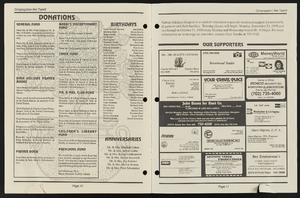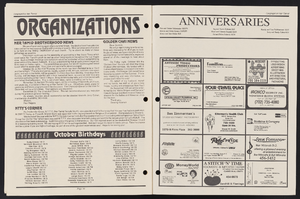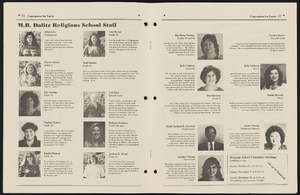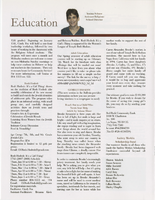Search the Special Collections and Archives Portal
Search Results
Michael S. Green oral history interview
Identifier
Abstract
Oral history interview with UNLV History Professor Michael S. Green conducted by Barbara Tabach on May 25, 2021 for The Great Pause: Las Vegas Chronicles of the COVID-19 Pandemic.
Subjects discussed include: Teaching at UNLV; life habits; medical observations; and adapting to health protocols.
Archival Collection
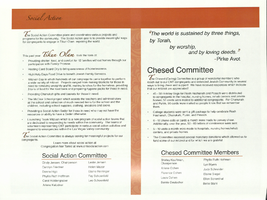
Annual report from Congregation Ner Tamid, 2011-2012
Date
Archival Collection
Description
Annual report from Congregation Ner Tamid, 2011-2012
Text
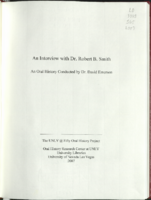
Transcript of interview with Dr. Robert B. Smith by Dr. David Emerson, June 13, 2006
Date
Archival Collection
Description
Text
Sylvester Collier oral history interview
Identifier
Abstract
Oral history interview with Sylvester Collier conducted by Claytee D. White on May 17, 2017 for the African Americans in Las Vegas: a Collaborative Oral History Project. In this interview, Collier discusses his early life in Dallas, Texas. He talks about his interest in art, joining the United States Air Force in 1951, and being sent to Nellis Air Force Base in Las Vegas, Nevada. Collier recalls attending the University of Nevada, Las Vegas (UNLV), earning a master’s degree in education, and teaching art classes in the Clark County School District (CCSD). Later, Collier discusses starting the Left of Center Art Gallery, and describes some of his art pieces. Lastly, Collier talks about his experience as an African American artist.
Archival Collection
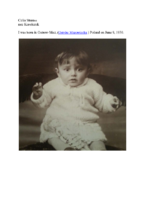
Biographical essay by Celia Strauss, 2014
Date
Archival Collection
Description
Celia Strauss describes her family history in Poland and fleeing the Nazis, narrowly escaping being captured or shot several times. She and her family came to the United States in 1947.
Text
Harold McKay oral history interview
Identifier
Abstract
Oral history interview with Harold McKay conducted by Dana Jamerson on March 13, 1981 for the Ralph Roske Oral History Project on Early Las Vegas. In this interview, McKay talks about the history of education in Southern Nevada. He specifically talks about the quality of education and racial integration in schools in early Las Vegas, Nevada.
Archival Collection

